- Home
- Larry Niven
Larry Niven's Man-Kzin Wars II Page 2
Larry Niven's Man-Kzin Wars II Read online
Page 2
Locklear came up from his seat with a bound, facing a sun that brightened as he watched. His wristcomp said not quite twelve hours had passed since the sunlet dimmed. His belly said it was late. His memory said yes, by God, there was one likely plan for locating that horizontal shaft: fly very near the frostline and scan every dark cranny that was two hundred meters or so inside the force walls. On Kzersatz, the stasis crypt had ended exactly beneath the frostline, perhaps a portal for those who’d built Zoo. And the front entrance had been two hundred meters inside the force walls.
He lifted the lifeboat slowly, ignoring hunger pangs, beginning to plot a rough map of Newduvai on the computer screen because he did not know how to make the computer do it for him. Soon, he passed a dry plateau with date palms growing in its declivities and followed the ship’s shadow to more fertile soil. Near frostline, he set the aeroturbine reactor just above idle and, moving briskly a hundred meters above the ground, began a careful scan of the terrain because he was not expert enough with Kzin computers to automate the search.
After three hours he had covered more than half of his sweep around Newduvai, past semi desert and grassy fields to pine-dotted mountain slopes, and the lifeboat’s reactor coolant was overheating from the slow pace. Locklear set the craft down nicely near that smaller mountain lake, chopped all power systems, and headed for scrubby trees in the near distance. Scattered among the pines were cedar and small oak. Nearer stood tall poplar and chestnut, invaded by wild grape with immature fruit. But nearest of all, the reason for his landing here, were gnarled little pear trees and, amid wild shoots of rank growth, trees laden with small ripe plums. He wolfed them down until juice dripped from his chin, washed in the lake, and then found the pears unripe. No matter: he’d seen dates, grapes, and chestnut, which suggested a model of some Mediterranean region. After identifying juniper, oleander, and honeysuckle, he sent his wristcomp scurrying through its megabytes and narrowed his opinion of the area: a surrogate slice of Asia Minor.
He might have sat on sunwarmed stones until dark, lulled by this sensation of being, somehow, back home without a care. But then he glanced far across the lower hills and saw, proceeding slowly across a parched desert plateau many miles distant, a whirlwind with its whiplike curve and bloom of dust where it touched the soil.
“Uh-huh! That’s how you reseed plants without insect vectors,” he said aloud to the builders of Zoo. “But whirlwinds don’t make honey, and they’ll sting anyway. Hell, even I can play god better than that,” he said, and bore a pocketful of plums into the lifeboat, filled once more with the itch to find the cave that might not even exist on Newduvai.
But it was there, all right. Locklear saw it only because of the perfect arc of obsidian, gleaming through a tangle of brush that had grown around the cave mouth.
He made a botch of the landing because he was trembling with anticipation. A corner of his mind kept warning him not to assume everything here was the same as on Kzersatz, so Locklear stopped just outside that brush-choked entrance. His wtsai blade made short work of the brush, revealing a polished floor. He strode forward, wtsai in one hand, his big Kzin sidearm in the other, to the now-familiar luminous film that flickered, several meters inside the cave mouth, across an obsidian portal. He thrust his blade through the film and saw, as he had expected to see, stronger light flash behind the portal. Then he stepped through and stopped, listening.
He might have been back in the Kzersatz crypt: a quiet so deep his own breathing made echoes; the long obsidian central passage, with nine branches on each side, ending in a frost-covered force wall that filled the passageway. And the clear plastic containers ranked in the side passages were of three sizes on smooth metal bases, as expected. But Locklear took one look at the nearest specimen, spinning slowly in its stasis cage, and knew that here the resemblance to Kzersatz ended forever.
The monster lay in something like a fetal crouch, tumbling slowly in response to the grav polarizer as it had been doing for many thousands of years. It was black, with great forward-curving horns and heavy shoulders, and when released—if anyone dared, he amended—it would stand six feet at the shoulder. Locklear figured its weight at a ton. Some European zoologists had once tried to breed cattle back to this brute, but with scant success, and Locklear had not seen so much as a sketch of it since his undergrad work. It was a bull aurochs, a beast which had survived on Earth into historic times; and counting the cows, Locklear realized there were over forty of them.
No point in kidding himself about his priorities. Locklear walked past the stasized camels and gerbils, hurried faster beyond small horses and cheetahs and bats, began to trot as he ran to the next passage past lions and hares and grouse, and was sprinting as he passed whole schools of fish (without water? Why the hell not? They were in stasis, he reminded himself—) in their respective containers. He was out of breath by the time he dashed between specimens of reindeer and saw the monkeys.
No! A mistake any Kzin might have made, but: “How could I play such a shameful joke on myself?” They were in fetal curls, and some of them boasted a lot of body hair. And each of them, Locklear realized, was human.
In a kind of reverence he studied them all, careful to avoid touching the metal bases which, on Kzersatz, opened the cages and released the specimens. Narrow-headed and swarthy they were, no taller than he, with heavy brow ridges and high cheekbones. Noses like prizefighters; forearms like blacksmiths; and some had pendulous mammaries and a few had—had—“Tits,” he breathed. “There’s a difference! Thank you, God.”
Men and women like these had first been studied in a river valley near old Dusseldorf, hardy folk who had preceded modern humans on Earth and, in all probability, had intermarried with them until forty or fifty thousand years before. Locklear, rubbing at the gooseflesh on his arms, began to study each of the stasized nudes with great care. He would need every possible advantage because they would be disoriented, perhaps even furious, when they waked. And the last thing Locklear needed was to start off on the wrong foot with a frenzied Neanderthaler.
Only an idiot would release a mob of Neanderthal hunters into a tiny world without taking steps to protect endangered game animals. The killing of a dozen deer might doom the rest of that species to slow extinction here. On the other hand, Locklear might have released all the animals and waited for a season or more. But certain of the young women in stasis were not exactly repellant, and he did not intend to wait a year before making their acquaintance. Besides, his notes on a Neanderthal community could make him famous on a dozen worlds, and Locklear was anxious to get on with it.
His second option was to wake the people and guide them, by force if necessary, outside to fruits and grains. But each of them would see those stasized animals, probably as meat on the hoof, and might not respond to his demands. It was beyond belief that any of them would speak a language he knew. Then it struck him that he already knew how to disassemble a stasis cage, and that he had as much time as he needed. With a longing glance backward, Locklear retraced his steps to the lifeboat and started looking for something with wheels.
But Kzin lifeboats do not carry cargo dollies, and the sun of Newduvai had dimmed before he found a way to remove the wheeled carriage below the reactor’s heat exchanger unit. Evidently the unit needed replacement often enough that Kzin engineers installed a carriage with it. That being so, Locklear decided not to use the lifeboat’s reactor any more than be had to.
He worked until hunger and aching muscles drove him to the cabin where he cut slices of bricklike Kzin rations and ate plums for dessert. But before he fell asleep, Locklear made some decisions that might save his hide. The lifeboat must be hidden away from inquisitive savage fingers; he would even camouflage the stasis crypt so that those savages would not know what lay inside; and it was absolutely crucial that he present himself as a shaman of great power. Without a few tawdry magics, he might not be able to distance himself as an observer might even be challenged to combat by some strong male. And Lo
cklear remembered those hornlike fingernails and bulging muscles all too well. He saw no sense in shooting a man, even a Neanderthal, merely to prove a point that could be made in peaceable ways.
He spent over a week preparing his hardware. His trials on Kzersatz bad taught him how, when all you’ve got is a hammer, the whole world is a nail; and that you must hammer out a few other tools as soon as possible. He soon found the lifeboat’s military toolbox complete with wire, pistol-grip arc welder, and motorized drill.
He took time off to gather fruit and to let his frustrations drain away. It was hard not to throw rocks at the sky when he commanded a state-of-the-art Kzin craft, yet could not cannibalize much of it for the things he needed. “Maybe I should release a dog from stasis so I could kick it,” he told himself aloud, while attaching an oak branch as a wagon tongue for the wheeled carriage. But lacking any other game, he figured, the dog would probably attack before he did.
Then he used oak staves to lever a cage base up, with flat stones as blocks, and eased his makeshift wagon beneath. The doe inside was heavy with young. Most likely, she would retreat far from him before bearing her fawns, and he knew what to do with the tuneable grav polarizer below that cage. Soon the clear plastic container sat gleaming in the sun, and Locklear poked hard at the base before retreating to the cave mouth.
As on Kzersatz, the container levered up, the red doe sank to the cage base, and the base slid forward. A moment later the creature moved, stood with lovely slender limbs shaking, and then saw him waving an oak stave. She reached grassy turf in one graceful bound and sped off with leaps he watched in admiration. Then, feeling somehow more lonely as the doe vanished, he sighed and disconnected the plastic container, then set about taking the entire cage to pieces. Already experienced with these gadgets, he would need at least two of the grav polarizer units before he could move stasized specimens outside with ease.
Disconnected from the stasis unit, a polarizer toroid with its power source and wiring could be tuned to lift varied loads; for example, a container housing a school of fish. The main thing was to avoid tipping it, which Locklear managed by wiring the polarizer securely to the underside of his wheeled carriage. Another hour saw him tugging his burden to the airlock, where he wrestled that entire, still-functioning cageful of fish inside. The fish, he saw, had sucking mouths meant for bottom-feeding on vegetable trash. They looked rather like carp or tilapia. Raising the lifeboat with great care, he eased toward the big lake some miles distant. It was no great trick to dump the squirming mass of life from the airlock port into the lake from a height of two meters, and then he celebrated by landing near the first laden fig tree he saw. Munching and lazing in the sun, he decided that his fortunes were looking up. But then, Locklear had been wrong before…
He knew that his next steps must be planned carefully. Before hiding the Kzin craft away he must duplicate the airboat he had built on Kzersatz. After an exhaustive search—meanwhile mapping Newduvai’s major features—he felled and stripped slender pines, hauling them in the lifeboat to his favorite spot near the small mountain lake. By now he had found a temporary spot in a barren cleft near frostline to hide the lifeboat itself, and began by stripping off its medium-caliber beam weapons from extension struts. The strut skins were attached by long screws, which Locklear saved. The weapon wiring came in handy, too, as he began fitting the raftlike platform of his airboat together. When he realized that the lifeboat’s slings and emergency seats could be stripped for a fabric sail, he began to feel a familiar excitement.
This airboat was larger than his first, with its single sail and swiveling double-pole keel for balance. With wires for rigging, he could hunker down just behind the mast and operate the gravity control vernier through a slot in the flat deck. He could carry over two hundred kilos of ballast, the mass of a stasis cage with a human specimen inside, far from the crypt before setting that specimen free. “I’ll have to carry the cage back, of course. Who knows what trouble a savage might create, fiddling with a stasis cage?” He snorted at himself; he’d almost said “monkeying,” and it was dangerous to assume he was smarter than these ancient people. But wasn’t he, really? If Neanderthalers had died out on Earth, they must have been inferior in some way. Well, he was sure as hell going to find out.
If his new airboat was larger than the first, it was also more unwieldy. He used it to ferry logs to his cabin site at the small lake, cursing his need to tack in the light breezes, wishing he had a better propulsion system, for over a week before the solution hit him.
At the time he was debating the release of more animals. The mammoths, he promised himself, would come last. No wonder the builders of Newduvai had left them nearest the crypt entrance! Their cage tops would each make a dandy greenhouse and their grav polarizers would lift tons. Or push tons.
“Some things don’t change,” he told himself, laughing aloud. “I was dumb on Kzersatz and I’ve been dumb here.” So he released the hares, gerbils, grouse, and some other species of bird with beaks meant for crunching seeds. He promptly installed their grav units around his airboat seat for propulsion, removing the mast and keel poles for reuse as cabin roof beams. That was the day Locklear nearly killed himself caroming off the lake’s surface at sixty miles an hour, whooping like a fool. Now the homemade craft was no longer a boat; it was a scooter, and would scoot with an extra fifty kilos of cargo.
It might have been elation with the sporty performance of his scooter that made him so optimistic, failing to remember that you have to kill pessimists, but optimists do it themselves. The log cabin, five meters square with fireplace and frond-thatched shed roof, needed only a pallet of sling fabric and fragrant boughs beneath. A big pallet, he decided. It had been Kit who taught him that he should have food and shelter ready before waking strangers in strange lands. He had figs and apricot slices drying, Kzin rations for the strong of tooth, and Kzin-sized drinking vessels from the lifeboat. He moved a few more items, including a clever Kzin memory pad with electronic stylus and screen, from lifeboat to cabin, then attached a ten-meter cable harness from the scooter to the lifeboat’s overhead weapon pylon.
It was only necessary then to set the scooter’s bottom grav unit to slight buoyancy, and to pilot the Kzin lifeboat very slowly, towing the scooter.
The cleft where he landed had become a soggy meadow from icemelt near the frostline high on Newduvai’s perimeter, protected on one side by the towering force wall and on the other by jagged basalt. The lifeboat could not be seen from below, and if his first aerial visitors were Kzinti, they’d have to fly dangerously near that force wall before they saw it. He sealed the lifeboat and then hauled the scooter down hand over hand, puffing with exertion, letting the scooter bounce harmlessly off the lifeboat’s hull as he clambered aboard. Then he cast off and twiddled with those grav unit verniers until the wind whistled in his ears en route to the stasis crypt. He was already expert at modifying stasis units, and he would have lots of them to play with. If he had to protect himself from a wild woman, he could hardly wish for anything better.
He trundled the crystal cage into sunlight still wondering if he’d chosen the right—specimen? Subject? “Woman, dammit; woman!” He was trying to wear too many hats, he knew, with the one labeled “lecher” perched on top. He landed the scooter near his cabin, placed bowls of fruit and water nearby, and pressed the cage baseplate, retreating beyond his offerings.
She sank to the cage floor but only shifted position, still asleep, the breeze moving strands of chestnut hair at her cheeks. She was small and muscular, her breasts firm and immature, pubic hair sparse, limbs slender and marked with scratches; and yes, he realized as he moved nearer, she had a forty-thousand-year-old zit on her little chin. Easily the best-looking choice in the crypt, not yet fully developed into the Neanderthal body shape, she seemed capable of sleep in any position and was snoring lightly to prove it.
A genuine teen-ager, he mused, grinning. Aloud he said, “Okay, Lolita, up and at ’em.” She stirred; a
hand reached up as if tugging at an invisible blanket. “You’ll miss the school shuttle,” he said louder. It had never failed back on Earth with his sister.
It didn’t fail here, either. She waked slowly, blinking as she sat up in lithe, nude, heartbreaking innocence. But her yawn snapped in two as she focused on him, and her pantomime of snatching a stone and hurling it at Locklear was convincing enough to make him duck. She leaped away scrabbling for real stones, and between her screams and her clods, all in Locklear’s direction, she seemed to be trying to cover herself.
He retreated, but not far enough, and grabbed a chunk of dirt only after taking one clod on his thigh. He threatened a toss of his own, whereupon she ducked behind the cage, watching him warily.
Well, it wouldn’t matter what he said, so long as he said it calmly. His tone and gestures would have to serve. “You’re a real little shit before breakfast, Lolita,” he said, smiling, tossing his clod gently toward the bowls.
She saw the food then, frowning. His open hands and strained smile invited her to the food, and she moved toward it still holding clods ready. Wolfing plums, she paused to gape as he pulled a plum from a pocket and began to eat. “Never seen pockets, hm? Stick around, little girl, I’ll show you lots of interesting things.” The humor didn’t work, even on himself; and at his first step toward her she ran like a deer.
Every time he pointed to himself and said his name, she screamed something brief. She moved around the area, checking out the cabin, draping a vine over her breasts, and after an hour Locklear gave up. He’d made a latchcord for the cabin door, so she couldn’t do much harm. She watched from fifty meters’ distance with great wondering brown eyes as he waved, lifted the scooter, and sped away with her cage and a new idea.
An hour later he returned with a second cage, cursing as he saw Lolita trying to smash his cabin window with an oak stave. The clear plastic, of cage material, was tough stuff and he laughed as the scooter settled nearby, pretending he didn’t itch to whack her rump. She began a litany of stone-age curses, then, as she saw the new cage and its occupant. Locklear actually had to mount the scooter and chase her off before she would quit pelting him with anything she could throw.

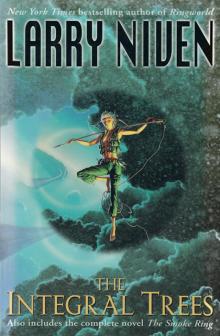 The Integral Trees - Omnibus
The Integral Trees - Omnibus A World Out of Time
A World Out of Time Crashlander
Crashlander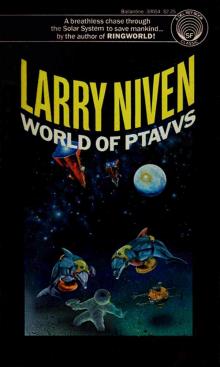 The World of Ptavvs
The World of Ptavvs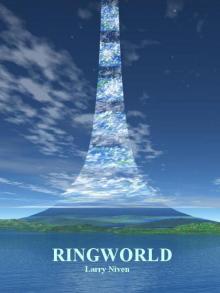 Ringworld
Ringworld Juggler of Worlds
Juggler of Worlds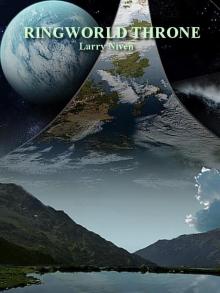 The Ringworld Throne
The Ringworld Throne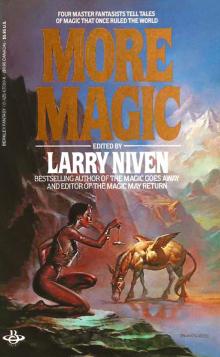 The Magic Goes Away Collection: The Magic Goes Away/The Magic May Return/More Magic
The Magic Goes Away Collection: The Magic Goes Away/The Magic May Return/More Magic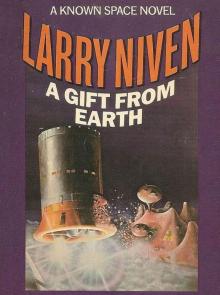 A Gift From Earth
A Gift From Earth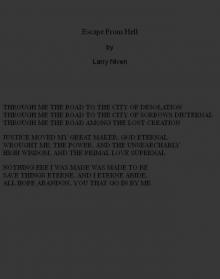 Escape From Hell
Escape From Hell Larry Niven’s Man-Kzin Wars - VII
Larry Niven’s Man-Kzin Wars - VII Rainbow Mars
Rainbow Mars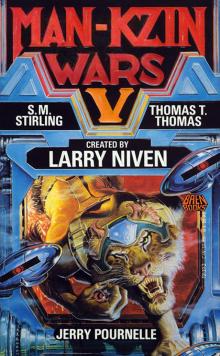 Larry Niven’s Man-Kzin Wars - V
Larry Niven’s Man-Kzin Wars - V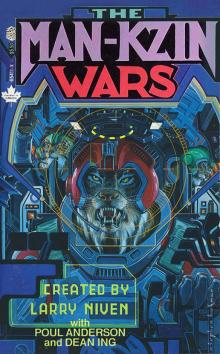 Larry Niven’s Man-Kzin Wars - I
Larry Niven’s Man-Kzin Wars - I Destroyer of Worlds
Destroyer of Worlds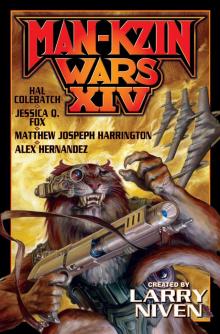 Man-Kzin Wars XIV
Man-Kzin Wars XIV Treasure Planet
Treasure Planet N-Space
N-Space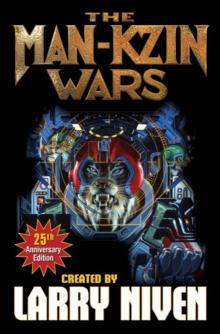 Man-Kzin Wars 25th Anniversary Edition
Man-Kzin Wars 25th Anniversary Edition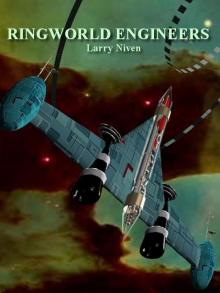 The Ringworld Engineers
The Ringworld Engineers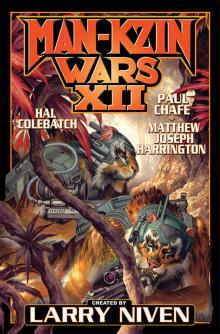 Larry Niven’s Man-Kzin Wars - XII
Larry Niven’s Man-Kzin Wars - XII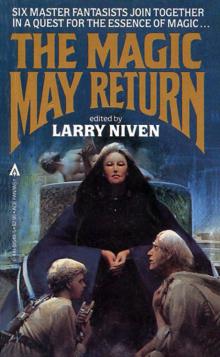 The Magic May Return
The Magic May Return Tales of Known Space: The Universe of Larry Niven
Tales of Known Space: The Universe of Larry Niven The Magic Goes Away
The Magic Goes Away Larry Niven’s Man-Kzin Wars - III
Larry Niven’s Man-Kzin Wars - III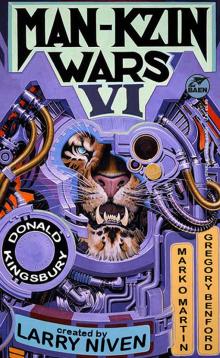 Larry Niven’s Man-Kzin Wars - VI
Larry Niven’s Man-Kzin Wars - VI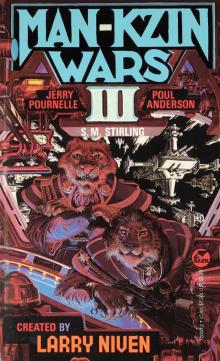 Man-Kzin Wars III
Man-Kzin Wars III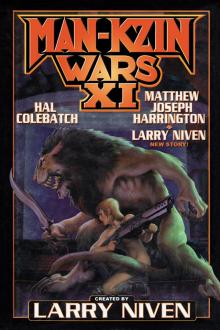 Larry Niven’s Man-Kzin Wars - XI
Larry Niven’s Man-Kzin Wars - XI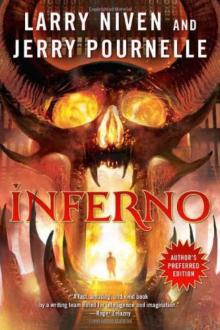 Inferno
Inferno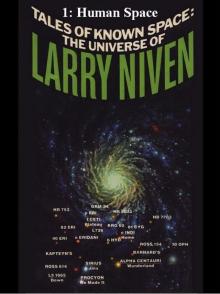 01-Human Space
01-Human Space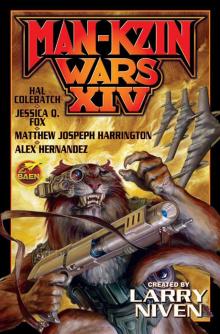 Larry Niven’s Man-Kzin Wars - XIV
Larry Niven’s Man-Kzin Wars - XIV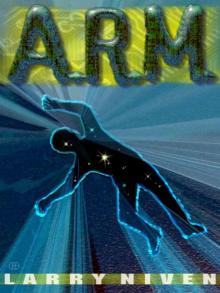 The Long Arm of Gil Hamilton
The Long Arm of Gil Hamilton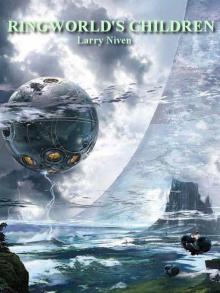 Ringworld's Children
Ringworld's Children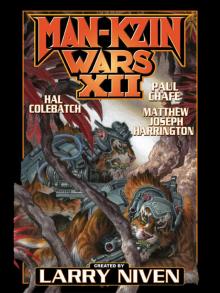 Man-Kzin Wars XII
Man-Kzin Wars XII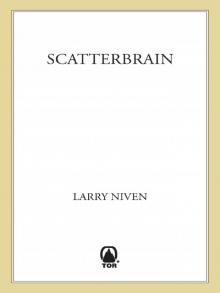 Scatterbrain
Scatterbrain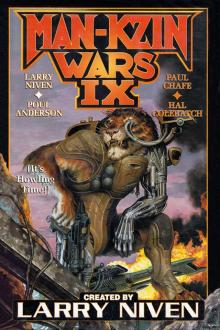 Man-Kzin Wars 9
Man-Kzin Wars 9 Man-Kzin Wars XIII
Man-Kzin Wars XIII Flatlander
Flatlander Man-Kzin Wars V
Man-Kzin Wars V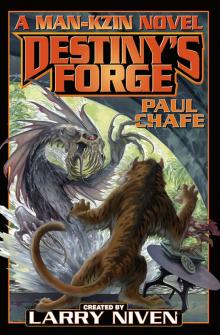 Destiny's Forge
Destiny's Forge Scatterbrain (2003) SSC
Scatterbrain (2003) SSC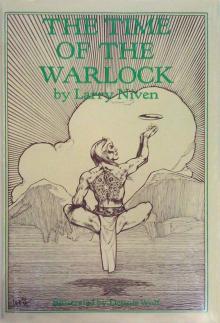 The Time of the Warlock
The Time of the Warlock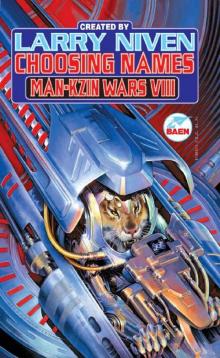 Choosing Names: Man-Kzin Wars VIII
Choosing Names: Man-Kzin Wars VIII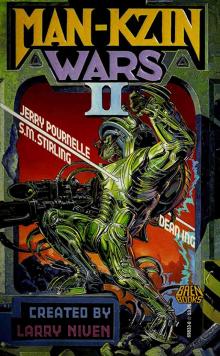 Larry Niven's Man-Kzin Wars II
Larry Niven's Man-Kzin Wars II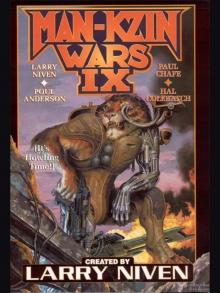 Man-Kzin Wars IX (Man-Kzin Wars Series Book 9)
Man-Kzin Wars IX (Man-Kzin Wars Series Book 9)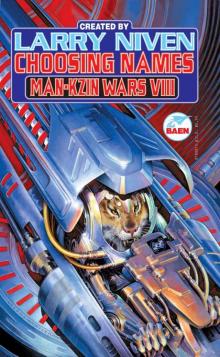 Choosing Names: Man-Kzin Wars VIII (Man-Kzin Wars Series Book 8)
Choosing Names: Man-Kzin Wars VIII (Man-Kzin Wars Series Book 8)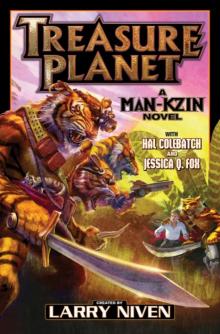 Treasure Planet - eARC
Treasure Planet - eARC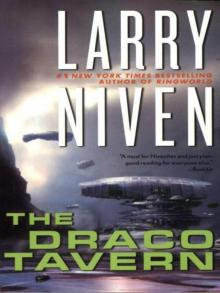 The Draco Tavern
The Draco Tavern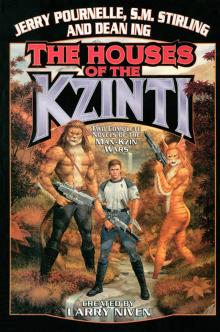 Larry Niven’s Man-Kzin Wars - The Houses of the Kzinti
Larry Niven’s Man-Kzin Wars - The Houses of the Kzinti The Fourth Profession
The Fourth Profession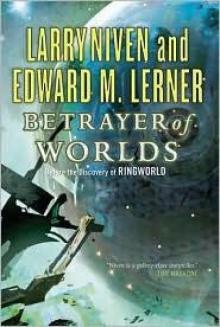 Betrayer of Worlds
Betrayer of Worlds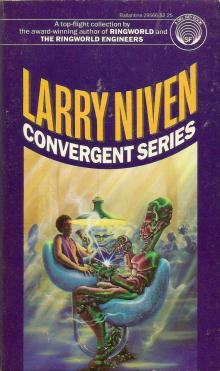 Convergent Series
Convergent Series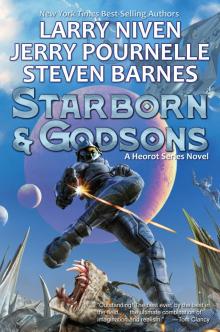 Starborn and Godsons
Starborn and Godsons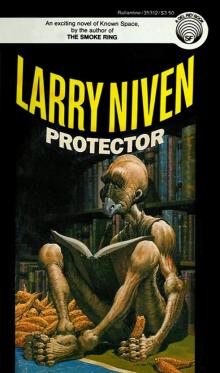 Protector
Protector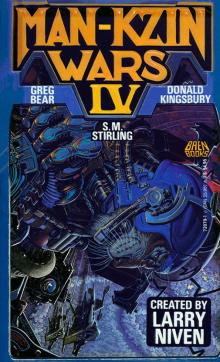 Larry Niven’s Man-Kzin Wars - IV
Larry Niven’s Man-Kzin Wars - IV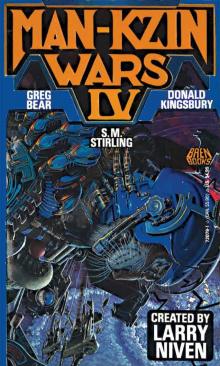 Man-Kzin Wars IV (Man-Kzin Wars Series Book 4)
Man-Kzin Wars IV (Man-Kzin Wars Series Book 4)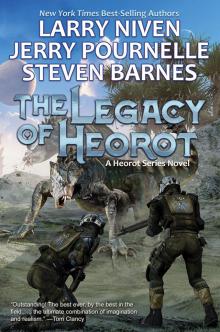 The Legacy of Heorot
The Legacy of Heorot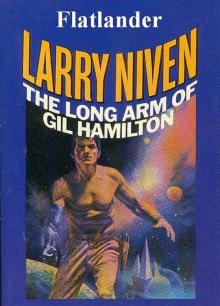 03-Flatlander
03-Flatlander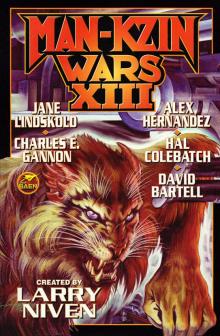 Larry Niven’s Man-Kzin Wars - XIII
Larry Niven’s Man-Kzin Wars - XIII Destiny's Road
Destiny's Road Fate of Worlds
Fate of Worlds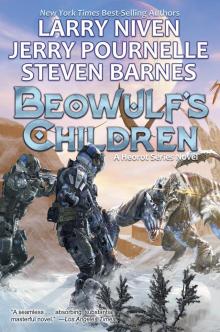 Beowulf's Children
Beowulf's Children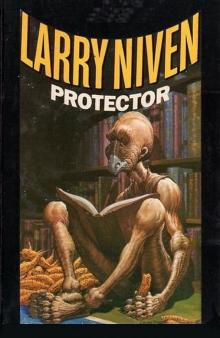 04-Protector
04-Protector The Flight of the Horse
The Flight of the Horse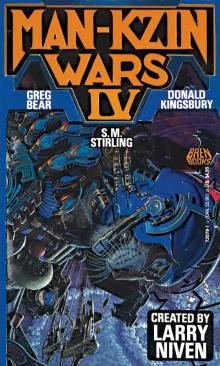 Man-Kzin Wars IV
Man-Kzin Wars IV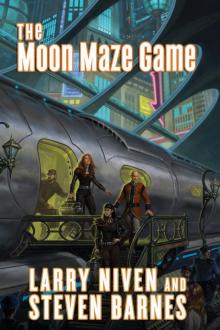 The Moon Maze Game dp-4
The Moon Maze Game dp-4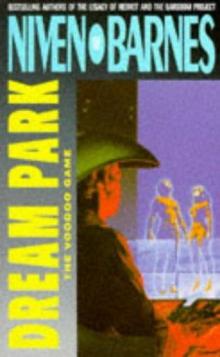 The California Voodoo Game dp-3
The California Voodoo Game dp-3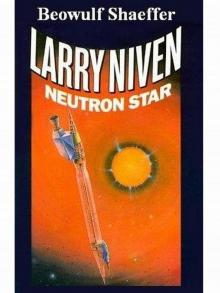 07-Beowulf Shaeffer
07-Beowulf Shaeffer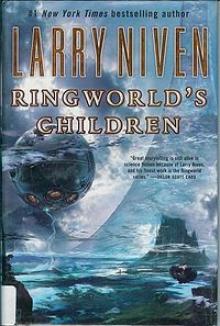 Ringworld's Children r-4
Ringworld's Children r-4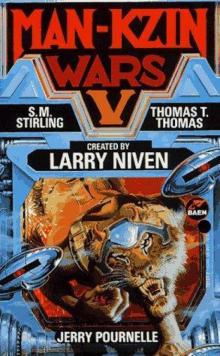 The Man-Kzin Wars 05
The Man-Kzin Wars 05 The Man-Kzin Wars 12
The Man-Kzin Wars 12 Lucifer's Hammer
Lucifer's Hammer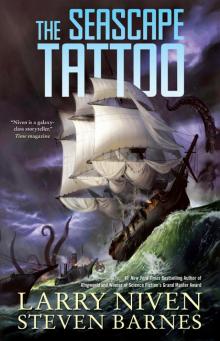 The Seascape Tattoo
The Seascape Tattoo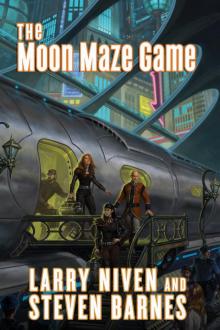 The Moon Maze Game
The Moon Maze Game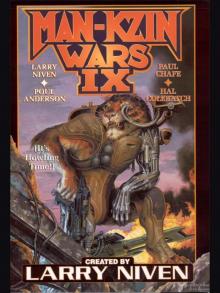 Man-Kzin Wars IX
Man-Kzin Wars IX All The Myriad Ways
All The Myriad Ways More Magic
More Magic 02-World of Ptavvs
02-World of Ptavvs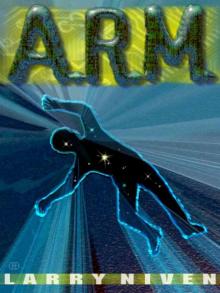 ARM
ARM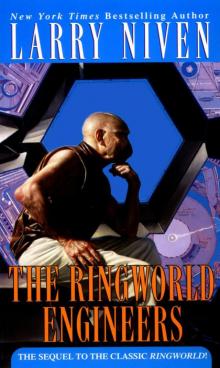 The Ringworld Engineers (ringworld)
The Ringworld Engineers (ringworld)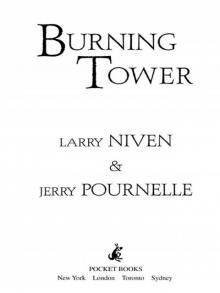 Burning Tower
Burning Tower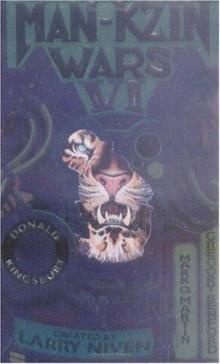 The Man-Kzin Wars 06
The Man-Kzin Wars 06 The Man-Kzin Wars 03
The Man-Kzin Wars 03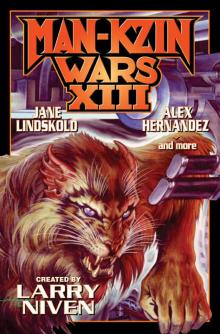 Man-Kzin Wars XIII-ARC
Man-Kzin Wars XIII-ARC The Hole Man
The Hole Man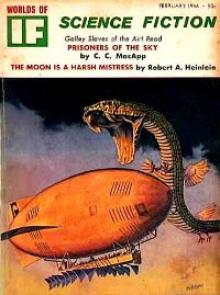 The Warriors mw-1
The Warriors mw-1 The Houses of the Kzinti
The Houses of the Kzinti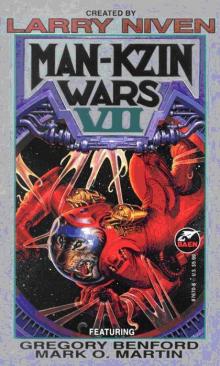 The Man-Kzin Wars 07
The Man-Kzin Wars 07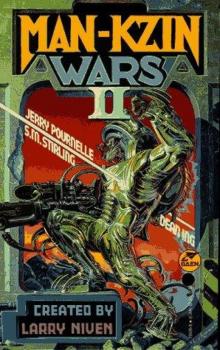 The Man-Kzin Wars 02
The Man-Kzin Wars 02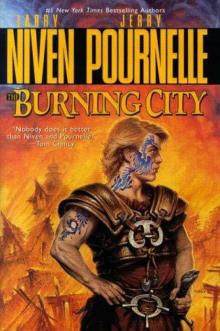 The Burning City
The Burning City At the Core
At the Core The Trellis
The Trellis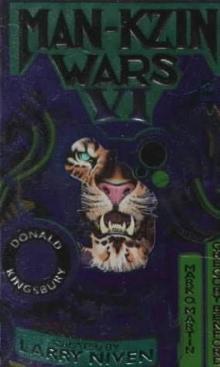 The Man-Kzin Wars 01 mw-1
The Man-Kzin Wars 01 mw-1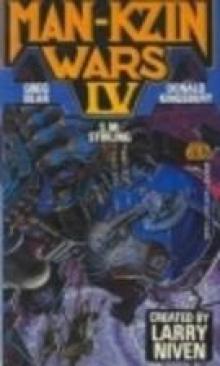 The Man-Kzin Wars 04
The Man-Kzin Wars 04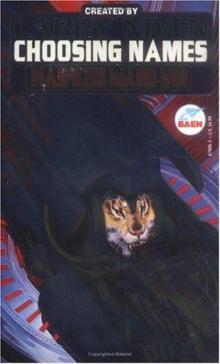 The Man-Kzin Wars 08 - Choosing Names
The Man-Kzin Wars 08 - Choosing Names Dream Park
Dream Park How the Heroes Die
How the Heroes Die Oath of Fealty
Oath of Fealty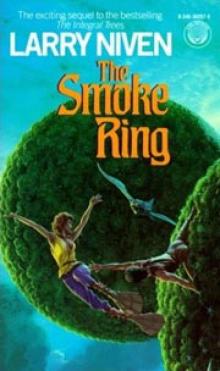 The Smoke Ring t-2
The Smoke Ring t-2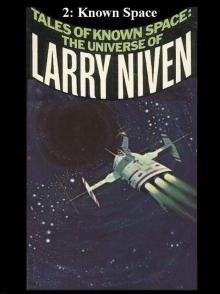 06-Known Space
06-Known Space Destiny's Road h-3
Destiny's Road h-3 Flash crowd
Flash crowd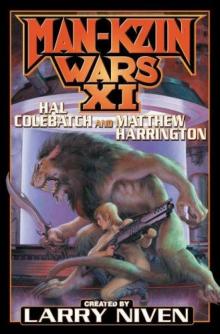 The Man-Kzin Wars 11
The Man-Kzin Wars 11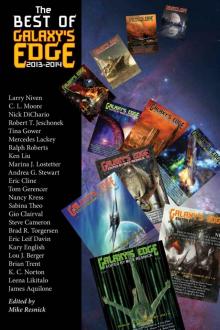 The Best of Galaxy’s Edge 2013-2014
The Best of Galaxy’s Edge 2013-2014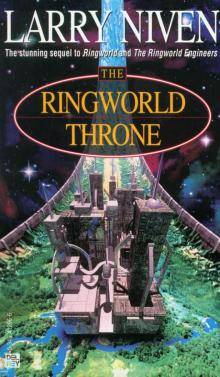 The Ringworld Throne r-3
The Ringworld Throne r-3 A Kind of Murder
A Kind of Murder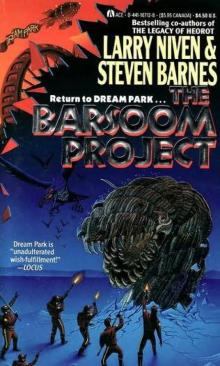 The Barsoom Project dp-2
The Barsoom Project dp-2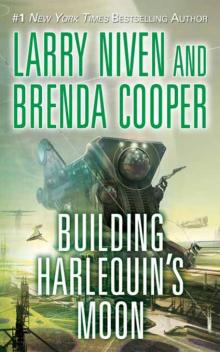 Building Harlequin’s Moon
Building Harlequin’s Moon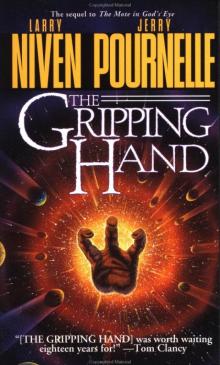 The Gripping Hand
The Gripping Hand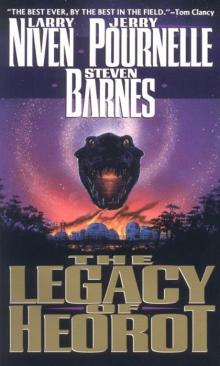 The Leagacy of Heorot
The Leagacy of Heorot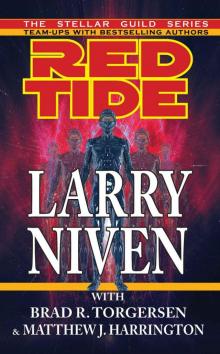 Red Tide
Red Tide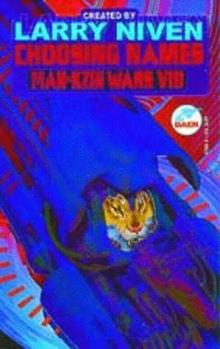 Choosing Names mw-8
Choosing Names mw-8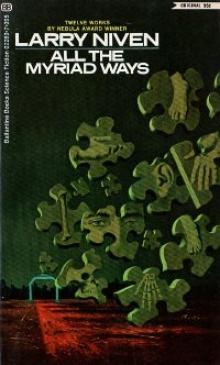 Inconstant Moon
Inconstant Moon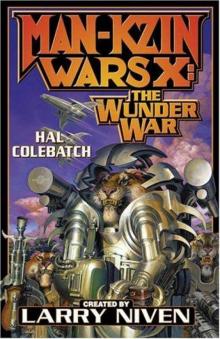 The Man-Kzin Wars 10 - The Wunder War
The Man-Kzin Wars 10 - The Wunder War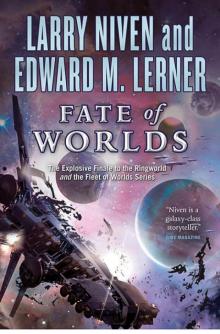 Fate of Worlds: Return From the Ringworld
Fate of Worlds: Return From the Ringworld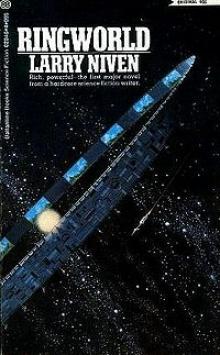 Ringworld r-1
Ringworld r-1 05-A Gift From Earth
05-A Gift From Earth The Integral Trees t-1
The Integral Trees t-1 Footfall
Footfall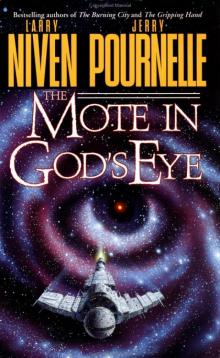 The Mote In God's Eye
The Mote In God's Eye Achilles choice
Achilles choice The Man-Kzin Wars 01
The Man-Kzin Wars 01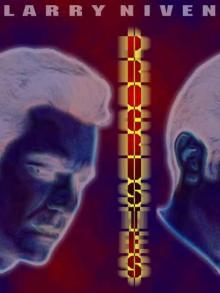 Procrustes
Procrustes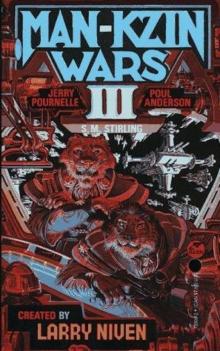 The Man-Kzin Wars 03 mw-3
The Man-Kzin Wars 03 mw-3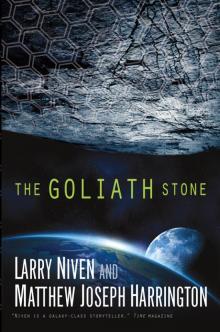 The Goliath Stone
The Goliath Stone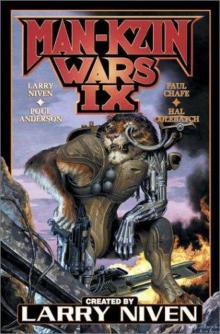 The Man-Kzin Wars 09
The Man-Kzin Wars 09